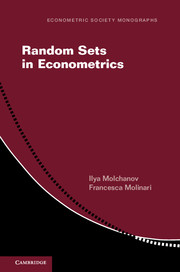Applications of Differential Geometry to Econometrics
Although geometry has always aided intuition in econometrics, more recently differential geometry has become a standard tool in the analysis of statistical models, offering a deeper appreciation of existing methodologies and highlighting the essential issues which can be hidden in an algebraic development of a problem. Originally published in 2000, this volume was an early example of the application of these techniques to econometrics. An introductory chapter provides a brief tutorial for those unfamiliar with the tools of Differential Geometry. The topics covered in the following chapters demonstrate the power of the geometric method to provide practical solutions and insight into problems of econometric inference.
- A landmark publication including important research of equal interest to econometricians, economists and mathematicians
- Was the first book to apply Differential Geometry to econometrics
- Includes introductory tutorial
Product details
March 2011Adobe eBook Reader
9780511836558
0 pages
0kg
This ISBN is for an eBook version which is distributed on our behalf by a third party.
Table of Contents
- Introduction P. Marriott and M. Salmon
- 1. An introduction to differential geometry P. Marriott and M. Salmon
- 2. Orthogonal projection, nested models and encompassing Maozu Lu and G. Mizon
- 3. Exact properties of the maximum likelihood estimator in exponential regression models G. Hillier and R. O'Brien
- 4. Empirical likelihood estimation and inference R. Smith
- 5. Measuring earnings differentials with frontier functions and Rao distances U. Jensen
- 6. First order predictive densities J. M. Corcuera and F. Giummole
- 7. An alternative comparison of classical tests: assessing the effects of curvature K. J. van Garderen
- 8. Testing for unit roots in AR and MA Models T. Rothenberg
- 9. Efficiency and robustness in a geometrical perspective R. Davidson
- 10. Paramaterisations and transformations
- An elementary introduction to Amari's differential geometry F. Critchley, P. Marriott and M. Salmon.




